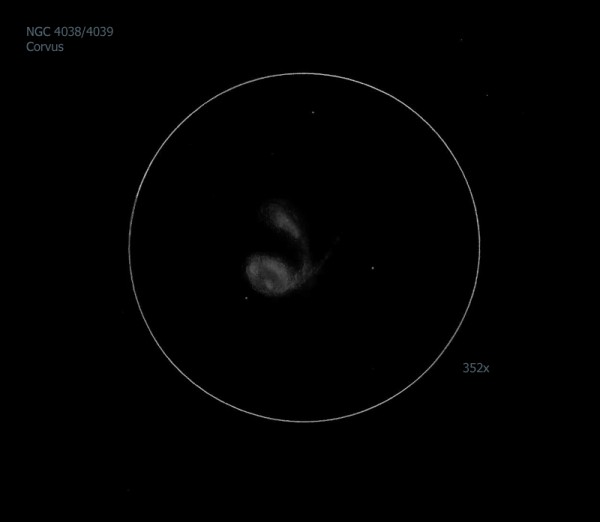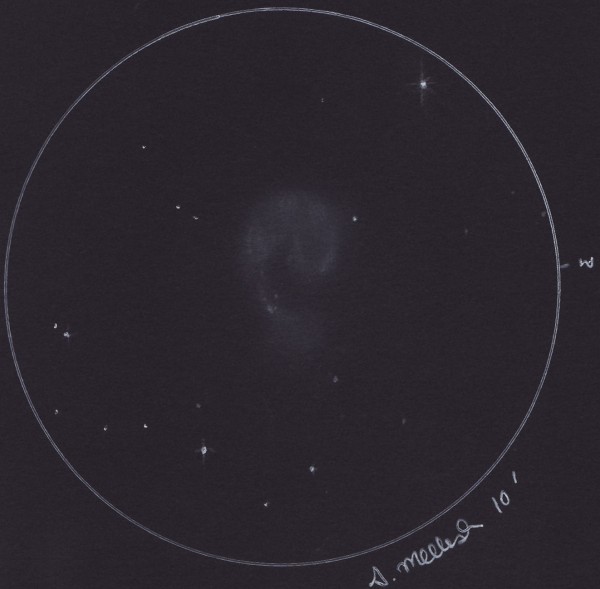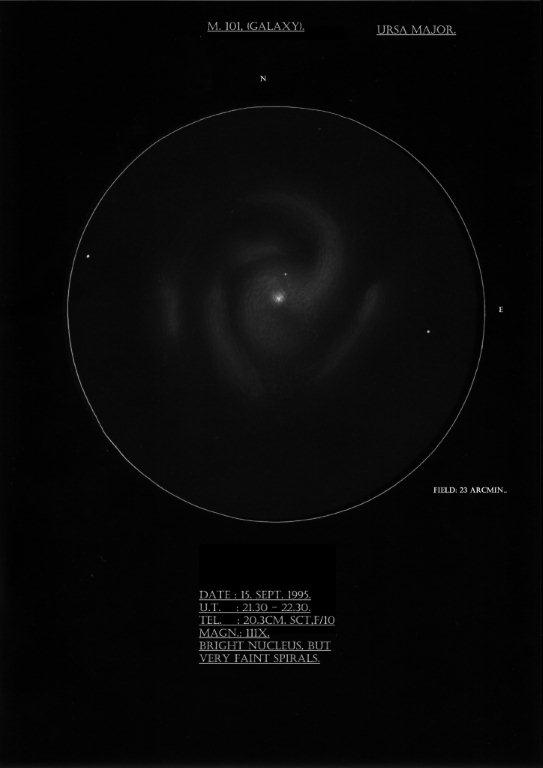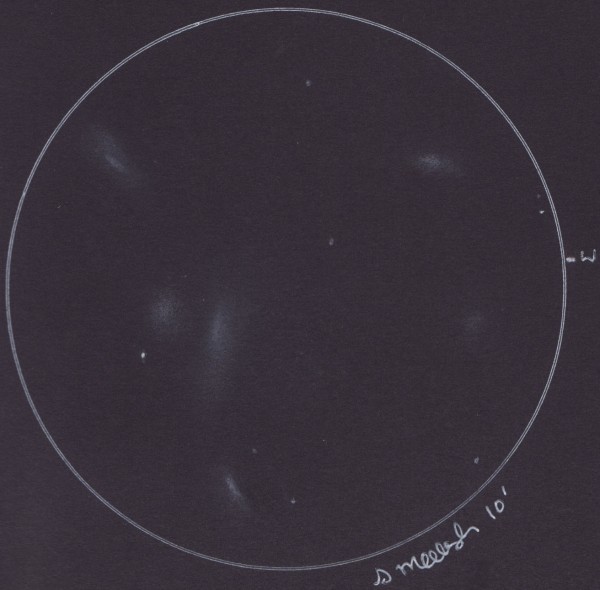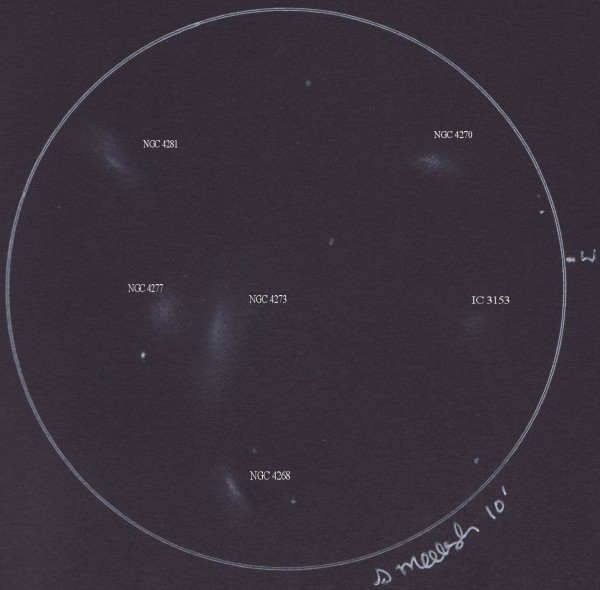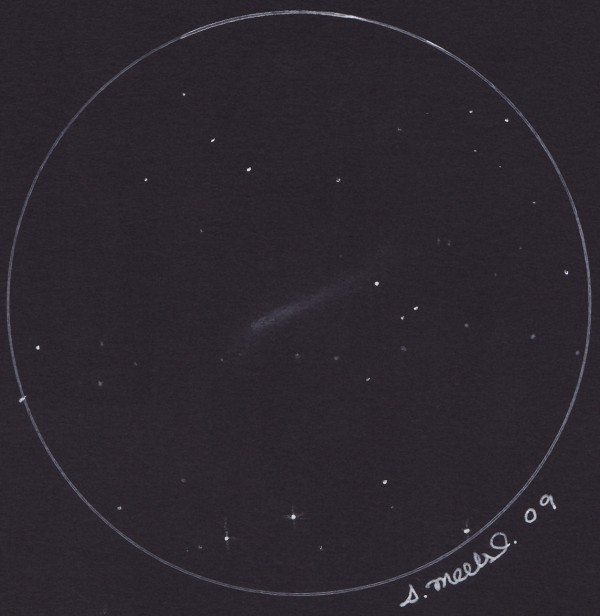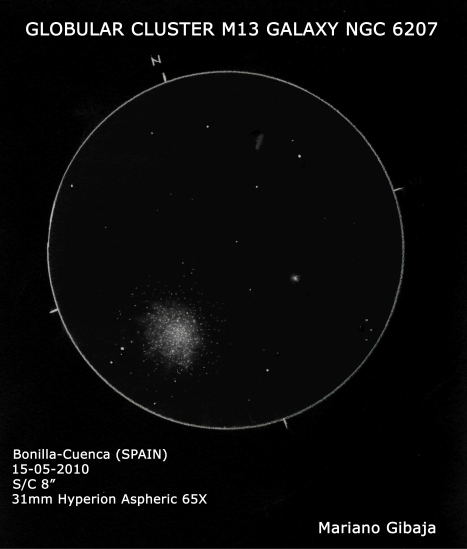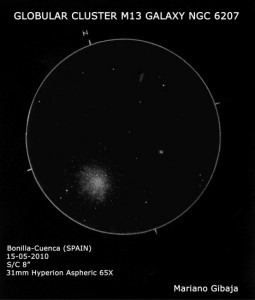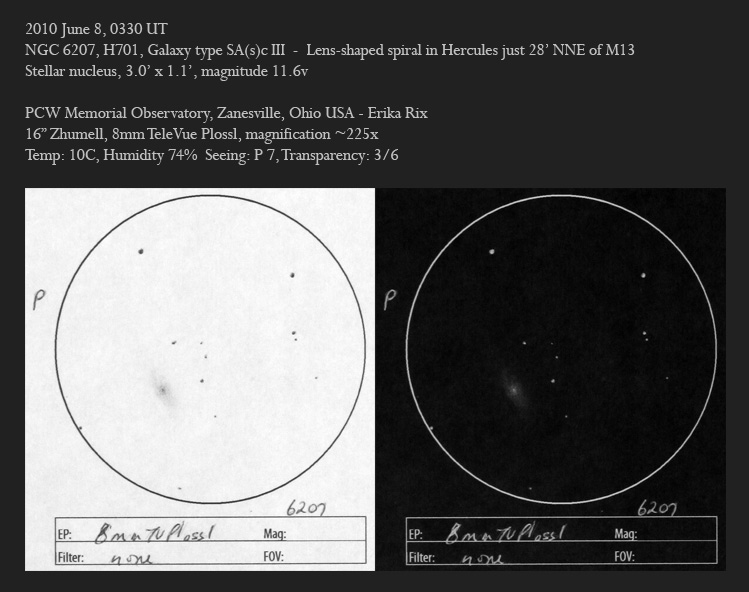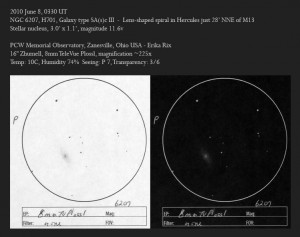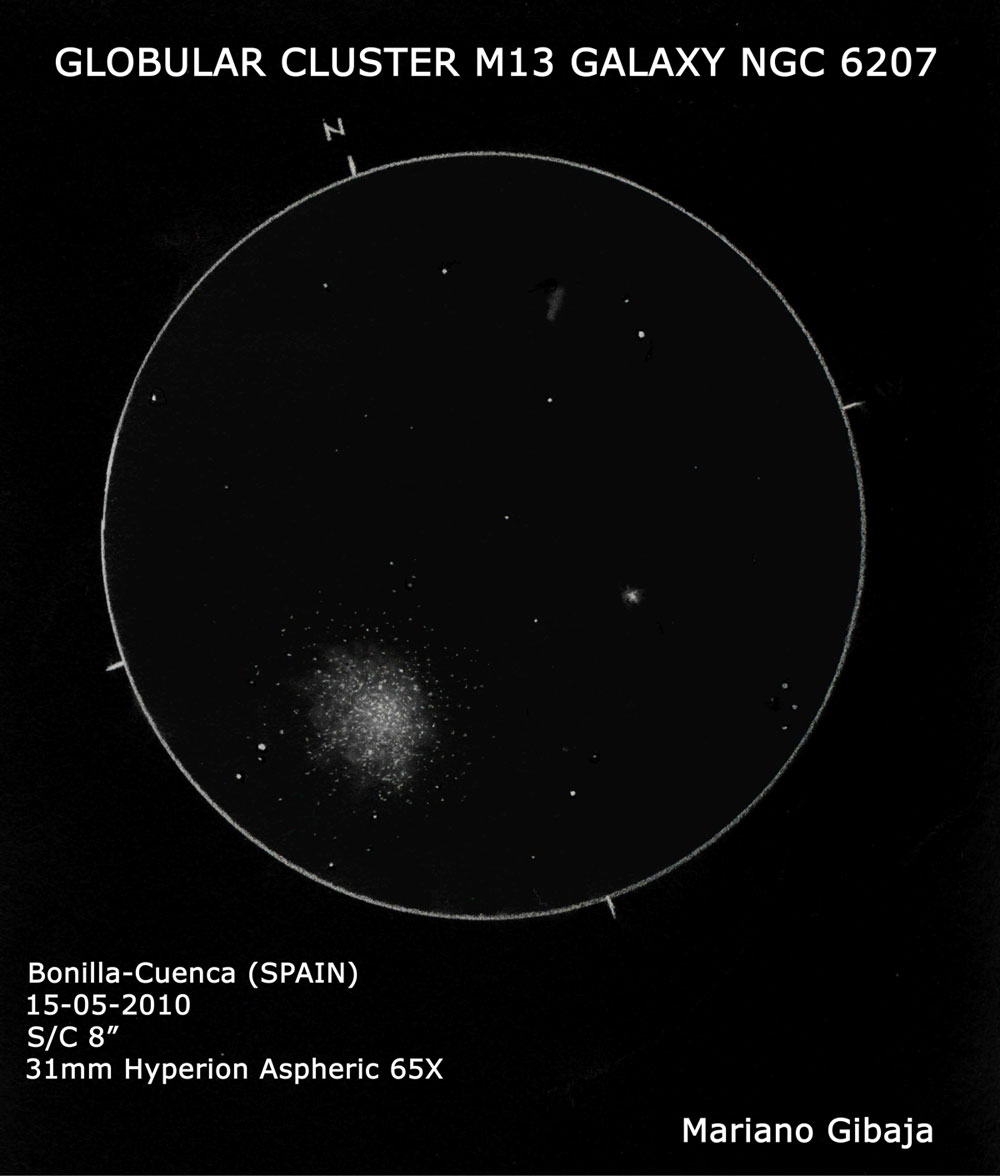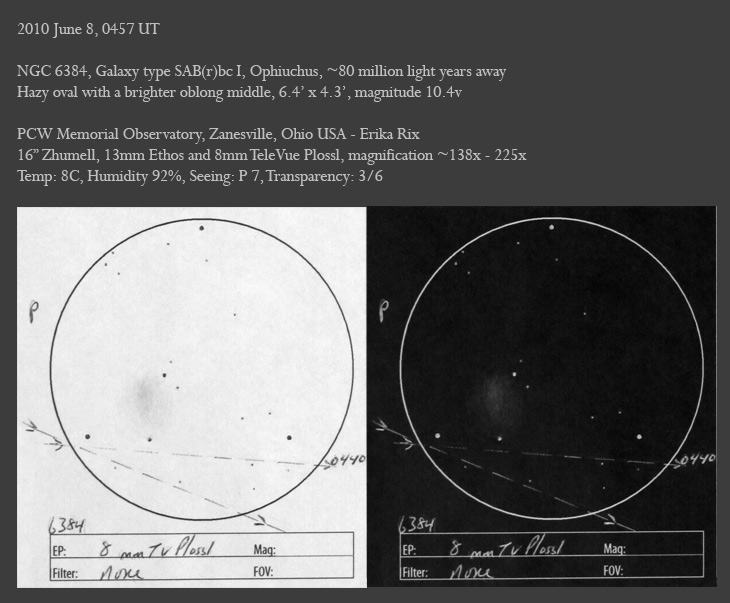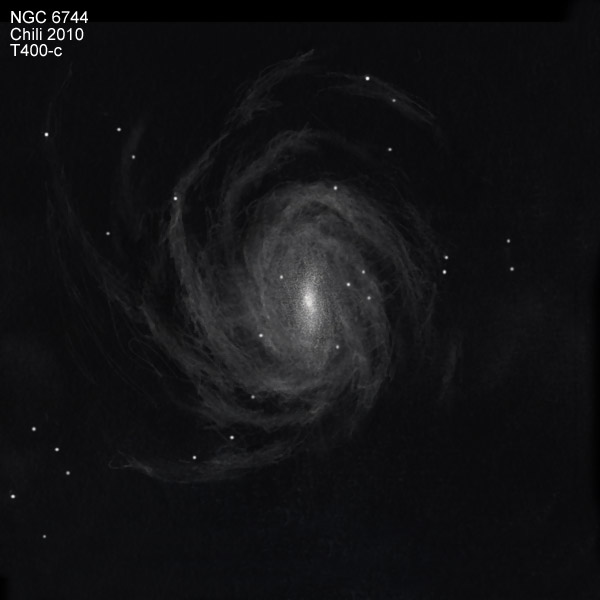Object name: NGC 4038/4039 (Arp 244), in Corvus
Object type: Interacting Galaxies
Location: Texas Star Party, Fort Davis, Texas, USA
Date: 12th May 2010
Media: Graphite pencil on white paper, scanned then inverted in
Photoshop Elements 6.0
Equipment: 36″ (91.5cm) f5 Dob, 13mm Televue Ethos (352x),
Conditions: NELM 6.9, Good seeing (Ant II), transparency II-III (where I
=excellent, IV = poor)
I was at the 2010 Texas Star Party and got the opportunity to use a
variety of large scopes, from an 18″ up to a 48″. This sketch of the
Antennae was made while observing with Larry Mitchell’s 36″ f5 Obsession.
Notes: Huge in the eyepiece, bright and full of detail. HII regions are
bright and the tidal tails are seen with relative ease. 4038 is the
larger of the two and its tidal tail is more obvious than that of 4039
which is barely seen.
Faith Jordan
